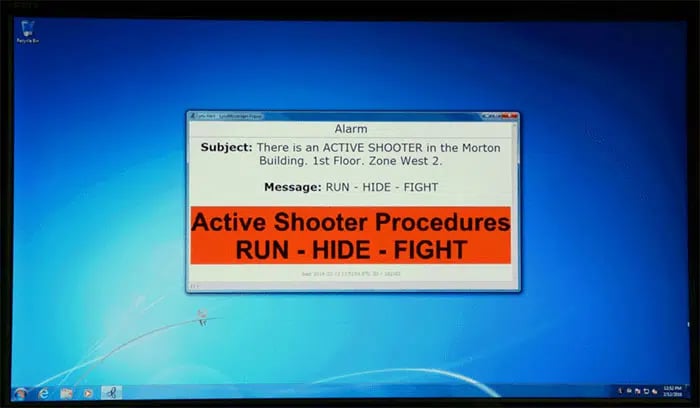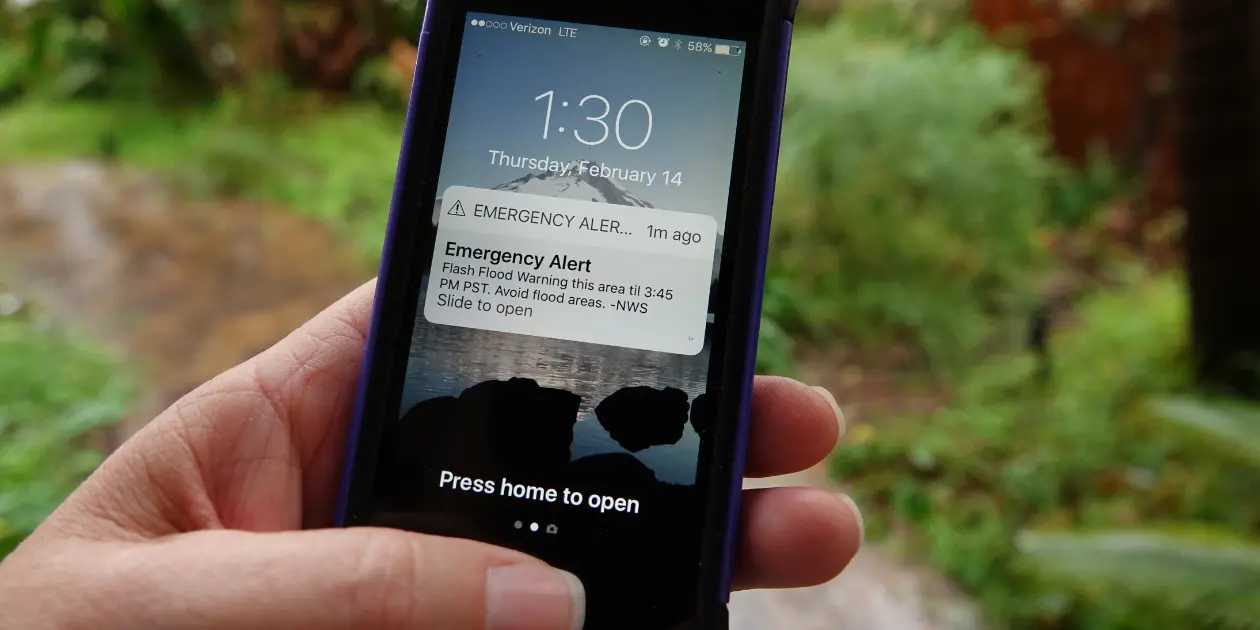In the face of active-shooter incidents, severe weather threats, and medical emergencies, communication is always a challenge. How do you get word to the other side of a building or campus to let others know of the danger, so everyone has time to escape or seek refuge? Historically, the primary tools for communicating critical situations included phones (both voice and text), email, two-way radios, and panic buttons. These methods, often activated independently by different individuals, presented drawbacks: time delays, susceptibility to human error, and incomplete reach, all of which could have fatal consequences.
Now, with the latest advancements in mass notification systems, we're equipped to communicate more rapidly, accurately, and inclusively during crises. Our goal is to illustrate how you can seamlessly integrate a mass notification system into your security strategy. Additionally, we're excited to highlight the key improvements made in the past three years, focusing on enhanced user-friendliness and efficiency. These developments ensure that everyone, regardless of their situation or needs, can receive and understand crucial alerts when it matters most.
“Weaponizing” Technology to Save Lives
Mass notification is in effect, a non-violent method of self-defense.
"Seconds count in dangerous situations. The faster we can get mass notifications out, the faster everyone can decide what their actions will be. This system turns over control and power to the survivors instead of the perpetrator"

Brian Freeman
VP Enterprise Accounts, Prime Secured
Integrating this method of self-defense into your security plan can be quite seamless. Mass notification systems typically work as automated two-way systems that allow any person in a network to send notifications to everyone throughout a building or campus simultaneously. These systems can connect a wide array of inputs and outputs, giving staff or stakeholders in many different settings the power not only to receive notifications but also to send them. No matter where a threat is located or who learns of it first, it's possible to let every other person in the network know what's going on in seconds.
Advancements in Mass Notification: A Step Forward in Communication Efficiency and Accessibility
In just the past three years, systems have advanced significantly in their ability to quickly communicate messages, while also enhancing efficiency to ensure users from all walks of life can more effectively receive these messages.
Integration of Artificial Intelligence (AI): AI has become a crucial component in mass notification systems, offering capabilities like predictive analytics to forecast potential emergencies, natural language processing for understanding and generating human-like alerts, and automated decision-making to initiate alerts based on real-time data.
Enhanced Mobile Connectivity: The widespread use of smartphones has led to more sophisticated mobile alert systems. These systems can now send location-specific alerts, ensuring that only those in the affected area are notified. They also allow for two-way communication, enabling recipients to respond or seek further information.
Internet of Things (IoT) Integration: IoT devices, such as sensors and cameras, are increasingly integrated into mass notification systems. They can detect a range of environmental factors — from smoke and fire to unauthorized entry — and automatically trigger alerts.
Improved Personalization and Targeting: Advanced algorithms now enable the customization of messages based on the recipient's location, role, language preference, and accessibility needs. This ensures that messages are not only received but are also comprehensible and actionable for everyone.
Social Media Integration: Mass notification systems are increasingly leveraging social media platforms for broader and faster dissemination of alerts. AI algorithms can also monitor social media for emerging threats or situations that may necessitate an alert.
Advanced Geofencing Capabilities: Geofencing technology has become more precise, allowing for very specific targeting of alerts. This is particularly useful in large-scale emergencies where only certain areas are affected.
Multimodal Alerts: Modern systems are capable of sending alerts across multiple channels simultaneously — including SMS, email, social media, PA systems, and digital signage. This ensures maximum reach and redundancy.
Cloud-based Solutions: The shift to cloud-based platforms has enabled more scalable, flexible, and cost-effective solutions for mass notifications. These systems can be quickly updated and expanded as needed.
Improved Accessibility Features: There is a growing emphasis on making mass notification systems more accessible. This includes features like text-to-speech and visual alerts.
With these improvements you can understand why we are passionate about educating users about implementing mass notification into their security plan. It's not just about warning people more effectively in dangerous situations; it's also about making sure everyone, no matter their background, gets the message. We believe in providing peace of mind to all, and saving lives is something worth getting excited about!
 Example of a Mass Notification Displayed on Employee Workstations. Photo Credit Lynx Systems
Example of a Mass Notification Displayed on Employee Workstations. Photo Credit Lynx Systems
Incorporating Mass Notification into Emergency Operation Plans
No matter the setting — whether it's a school, factory, office building, shopping mall, retail store, or hospital — essentially anywhere large groups of people gather, implementing this into your emergency response plan is an important conversation to have. It’s a straightforward and critical step in enhancing safety, here's a simple outline on how to go about it:
Draft and Implement an Emergency Operation Plan: Every management team should have a comprehensive emergency operation plan in place. Integrating a mass notification system into this plan is straightforward, as these systems are designed to be user-friendly. Unlike traditional systems, which can be complex and less reliable, mass notification systems are easier to understand and operate. If you are unsure about where to start or looking for guidance as you add this into your plan, we recommend using the OSHA Emergency Preparedness and Response resources.
Educational Onboarding and Regular Safety Meetings: During onboarding orientations and regular safety meetings, it's essential to educate all staff or stakeholders. They should learn how to initiate notifications, understand what each notification means, and know where to look for incoming messages. Additionally, they should be trained on the appropriate actions to take when a notification is received. The simplicity and ease of use of these systems help instill confidence and clarity, enabling people to think and act more effectively during emergencies.
Collaboration with Safety Committees: Before installation, it's crucial for the enterprise to collaborate with its safety committee and leaders. This collaboration will help tailor the system to the specific needs of the organization, considering factors like the variety of potential notifications and strategies to handle different emergency scenarios. The system's flexibility allows it to be customized to suit any emergency, considering the location, floor plans, staff availability, existing equipment, and software.
Working with Professional Integrators: Professional integrators, like Prime Secured, can provide valuable assistance in planning, organizing, and implementing the system effectively. Our expertise ensures that the system is set up to meet the specific needs and circumstances of your environment.
Our Blog
Subscribe to the Prime Secured blog to receive the latest updates.
Integration with Existing Security and IT Systems
These systems excel at broadcasting specific messages or actions across an entire network, seamlessly integrating with a variety of existing devices and platforms. By leveraging computers, existing digital signage, SMS, and email, they reduce the need to purchase additional hardware. Most enterprises already have the necessary infrastructure to support these systems.
Many organizations choose to synchronize their mass notification systems with existing internal security systems. Such integration allows for the automated triggering of notifications based on predefined events. This can include placing notifications on interactive maps, which enables leaders to track the source and nature of alerts. The combination of mass notification systems with other security features—such as visual cues, audio alarms, microphones, and sound detection—significantly enhances the effectiveness of emergency responses.
Valuing Safety in Uncertain Times
In today's unpredictable world, finding ways to regain some control over situations like active shooter incidents, natural disasters, and unforeseen emergencies is empowering. Despite the increase in mass shootings and other violent events in recent years, many organizations have struggled to respond effectively and cohesively to such emergencies. It's comforting to know that we now have the means to address these challenges more proactively and efficiently.
If you're considering implementing a mass notification system or interested in exploring the range of solutions available, feel free to contact Prime Secured. We are eager to become your trusted partner in strengthening your physical security strategy and would be delighted to assist you in understanding and choosing the best options for your needs
Leave Your Comments:
Other Topics You Might Be Interested In

